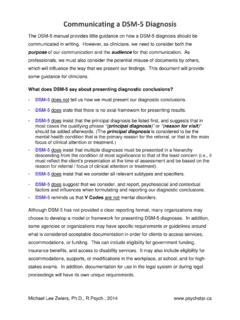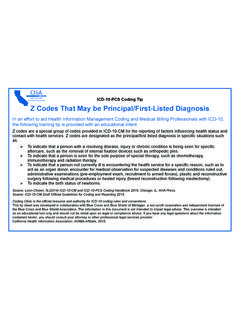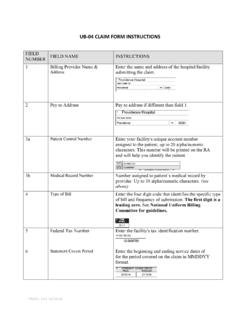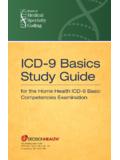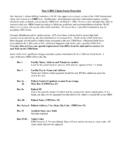Transcription of Writing a DSM-5 Diagnosis - PsychSTAR
1 Communicating a DSM-5 DiagnosisMichael Lee Zwiers, , , DSM-5 manual provides little guidance on how a DSM-5 Diagnosis should becommunicated in Writing . However, as clinicians, we need to consider both thepurposeof our communication and theaudiencefor that communication. Asprofessionals, we must also consider the potential misuse of documents by others,which will influence the way that we present our findings. This document will providesome guidance for does DSM-5 say about presenting diagnostic conclusions? DSM-5does not tell us how we must present our diagnostic conclusions. DSM-5does state that there is no axial framework for presenting results. DSM-5does insist that the principal Diagnosis be listed first, and suggests that inmost cases the qualifying phrase (principal Diagnosis ) or (reason for visit) should be added afterwards.
2 (Theprincipal diagnosisis considered to be themental health condition that is the primary reason for the referral, or that is the mainfocus of clinical attention or treatment.) DSM-5does insist that multiple diagnoses must be presented in a hierarchydescending from the condition of most significance to that of the least concern ( , itmust reflect the client s presentation at the time of assessment and be based on thereason for referral / focus of clinical attention or treatment). DSM-5does insist that we consider all relevant subtypes and specifiers. DSM-5does suggest that we consider, and report, psychosocial and contextualfactors and influences when formulating and reporting our diagnostic conclusions. DSM-5reminds us thatV Codesare not mental DSM-5 has not provided a clear reporting format, many organizations maychoose to develop a model or framework for presenting DSM-5 diagnoses.
3 In addition,some agencies or organizations may have specific requirements or guidelines aroundwhat is considered acceptable documentation in order for clients to access services,accommodations, or funding. This can include eligibility for government funding,insurance benefits, and access to disability services. It may also include eligibility foraccommodations, supports, or modifications in the workplace, at school, and for high-stakes exams. In addition, documentation for use in the legal system or during legalproceedings will have its own unique a DSM-5 DiagnosisMichael Lee Zwiers, , , following examples offer suggestions for how to write relevant DSM-5 that these examples do not include important information that would be relevant tocommunicating a diagnostic formulation ( , background history, presenting concerns,manifestation and progression of behavioural signs and symptoms over time).
4 Example 1: Client with a single disorder Client X presents with symptoms and behaviours that are consistent witha DSM-5 Diagnosis of Major Depressive Disorder, Single Episode, Mild( ), with Anxious Distress Note:Given that there is only one disorder the principle Diagnosis would be assumed and it istherefore not required to state:Principal : DSM-5 presents diagnostic specifiers in lowercase rather than capitalized , in order to ensure that readers recognize that all words are part of the diagnosticdescription, I recommend that the entire Diagnosis be capitalized, including 2: Client with two mental health disorders Client Y meets criteria for the following DSM-5 Anxiety Disorder (Principal Diagnosis ) Learning Disorder, With Impairment in Reading Example 3: Client with two mental health disorders (one a Subtype) Client Z meets criteria for the following DSM-5 Stress Disorder (Principal Diagnosis ) Depressive Disorder (Dysthymia), Moderate, With PureDysthymic Syndrome, with Peripartum OnsetExample 4: Client with a mental health disorder and aprimary medical condition Client P meets criteria for the following DSM-5 and ICD-10 diagnoses:250 Diabetes Mellitis (Principal Diagnosis ) Nervosa, Moderate Note.
5 When a medical condition if the primary concern (including medical condition-inducedmental disorders), then the principle Diagnosis is attached to that disorder.
